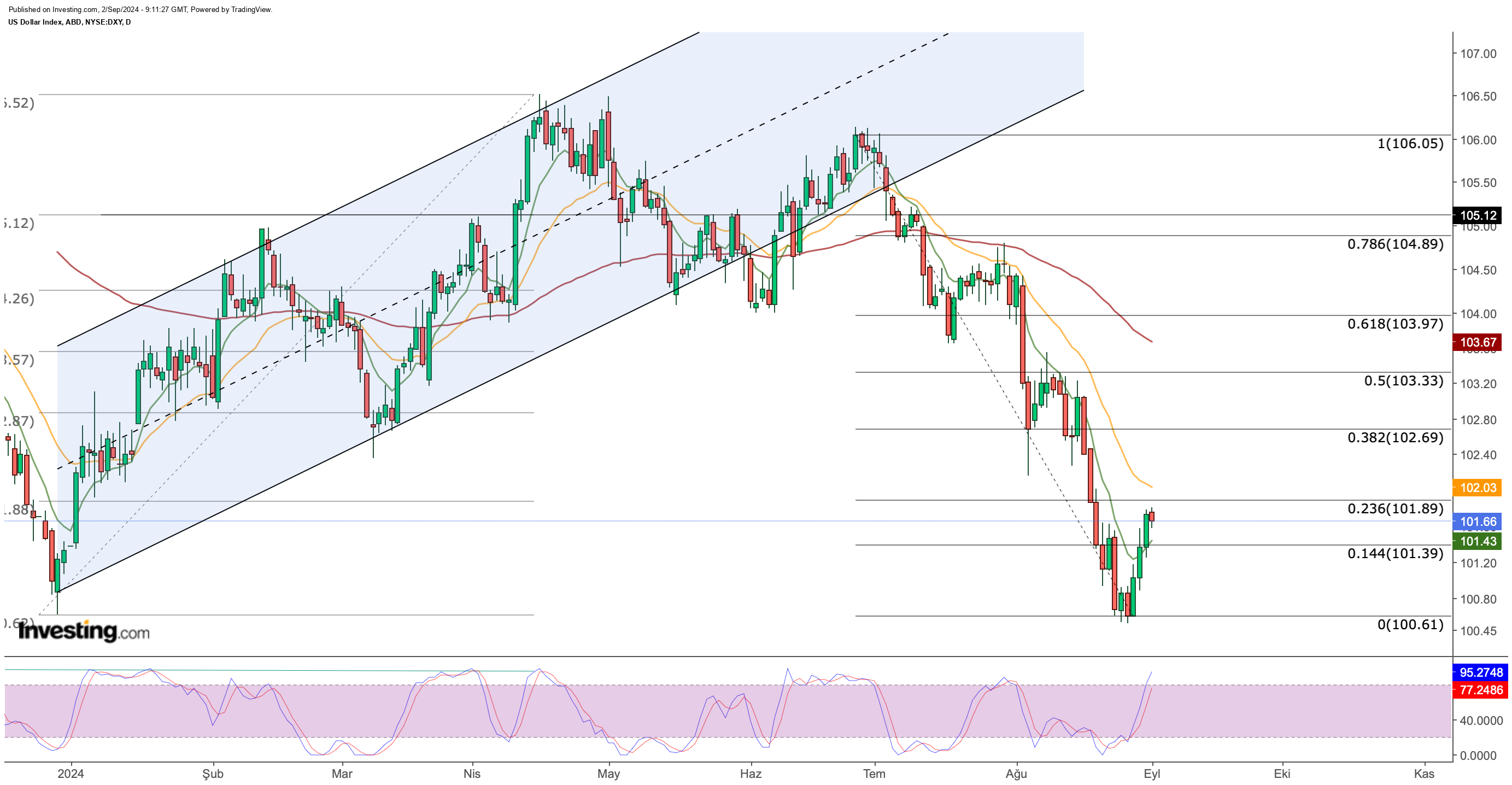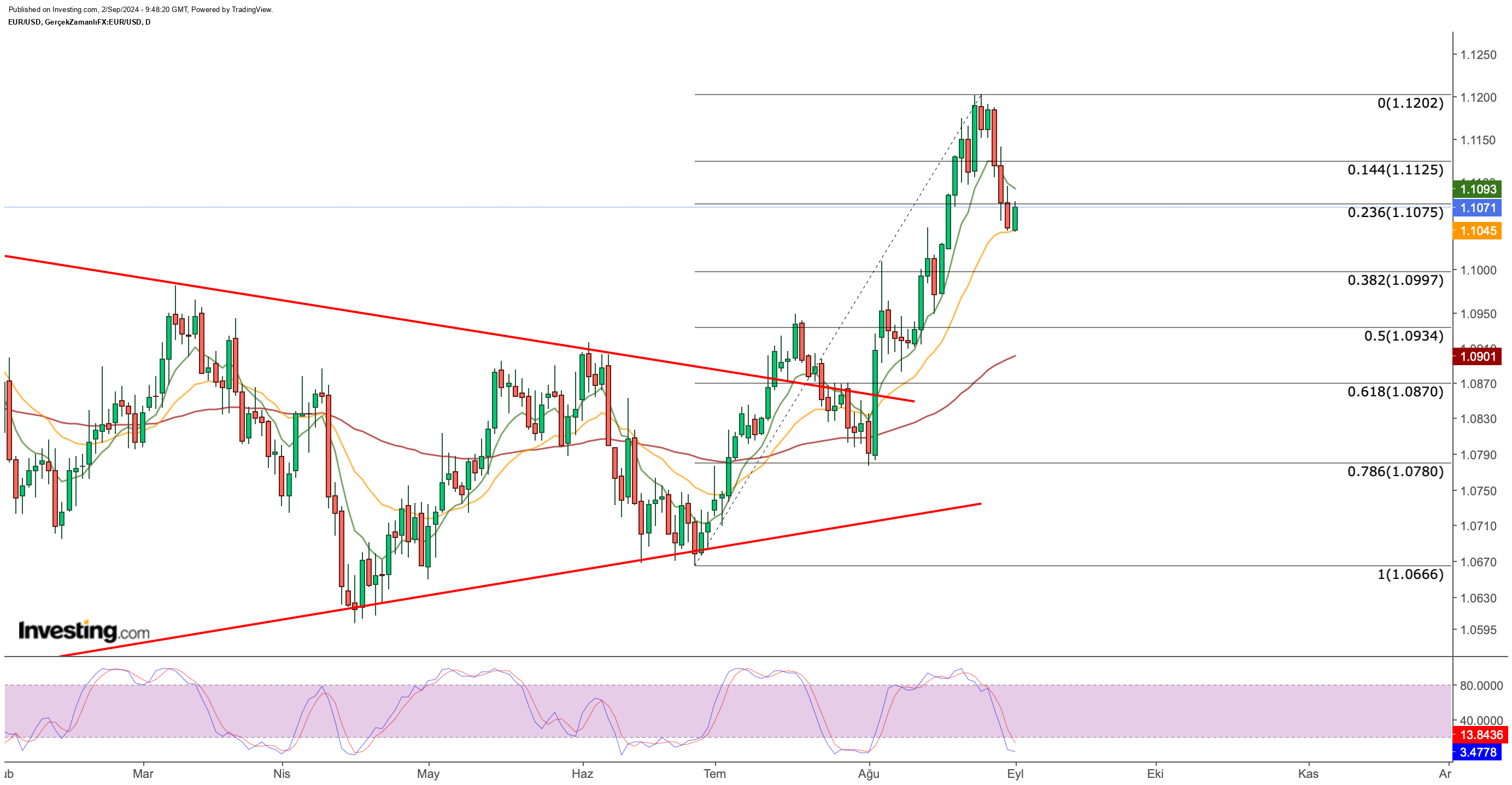- The US dollar, after hitting a yearly low, is showing signs of recovery.
- The jobs report will be a decisive factor for the rebound going ahead.
- Resistance is at the 102 level, with potential support around 101.40 and 100.60.
- For less than $8 a month, InvestingPro's Fair Value tool helps you find which stocks to hold and which to dump at the click of a button.
After hitting a new low for the year last week, the US dollar seems to be turning things around. It's found support and is starting September on a positive note.
The dollar's recent rebound was fueled by strong economic data, including positive growth numbers and a less-than-expected inflation reading.
This suggests that the Fed might only cut interest rates by 25 basis points, which is good news for the greenback.
This week, all eyes will be on US labor data, especially the non-farm payrolls report. A strong jobs report could further support the dollar, as it might lead the Fed to slow down its rate cuts.
However, a weak jobs report could renew expectations of a larger rate cut later this year, which might hurt the dollar in the short term. Other important labor data to watch include JOLTs, and unemployment claims.
In the meantime, the dollar has already broken through its first resistance level and is heading towards a more significant one.
US Dollar Index - Technical View
Based on the June-August pullback, the Fib 0.236 level stands as a critical resistance point that must be breached for the DXY to continue its recovery.
A move above this level could push the index toward the 102.6-103.3 range, potentially triggered by strong U.S. labor data.

However, the DXY has started September on a subdued note. The index began the week with a slight decline and faces a weak outlook near the 101.9 resistance.
The U.S. market's holiday today contributes to the index's current weakness, but the upward movement toward the 102 region may resume based on upcoming data.
If the DXY fails to break into the 102 range this week, it could test 101.40 as support due to diminished demand.
If this support level also fails, the index might revisit the last demand zone at 100.60. Such a decline could be bolstered by weaker labor data, which might suggest the Fed needs to raise rates further.
EUR/USD - Technical View
The dollar received a boost from positive U.S. economic data, despite the dovish tone of Powell's Jackson Hole speech.
Meanwhile, the Eurozone’s low inflation figures have tempered expectations for immediate interest rate cuts, leading EUR/USD to pull back from its yearly peak. Last week, the euro peaked at 1.12 against the dollar but has since retreated 1.3% to 1.1045.

The euro’s decline was partly driven by speculation that the Fed may adopt a more gradual easing approach, supported by upcoming employment data. Market expectations shifted from a 33% chance of a 50 basis point rate cut by the Fed this month to a 67% chance of a 25 basis point cut.
Conversely, markets are pricing in a high probability of the ECB cutting rates again at its September 12 meeting. August inflation in the Eurozone fell to 2.2%, a three-year low, and core inflation dropped by one percentage point after three months.
This trend could encourage the ECB to lower rates further, contributing to the euro's recent decline to a two-week low against the dollar.
As a result, EUR/USD has corrected from its recent highs, dipping below the Fib 0.236 support at 1.1075. Today, the pair finds intermediate support at 1.1045, with a potential drop to 1.10 if this level fails to hold.
Depending on this week’s U.S. labor data, if EUR/USD finds support at the 1.10 region, it may recover towards 1.11. However, positive U.S. data could extend the correction towards the 1.09-1.093 range.
***
Disclaimer: This article is written for informational purposes only. It is not intended to encourage the purchase of assets in any way, nor does it constitute a solicitation, offer, recommendation or suggestion to invest. I would like to remind you that all assets are evaluated from multiple perspectives and are highly risky, so any investment decision and the associated risk is at the investor's own risk. We also do not provide any investment advisory services. We will never contact you to offer investment or advisory services.
